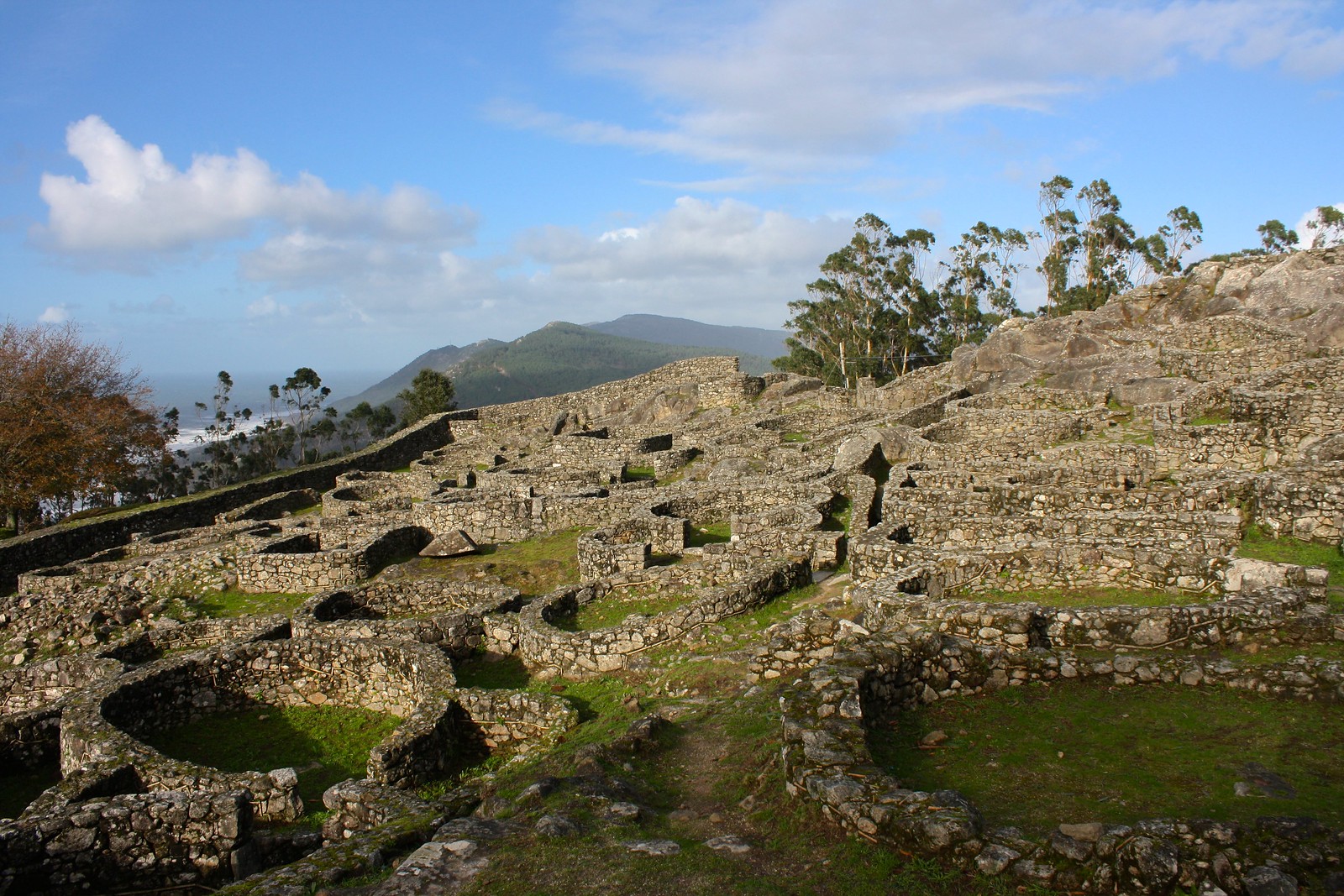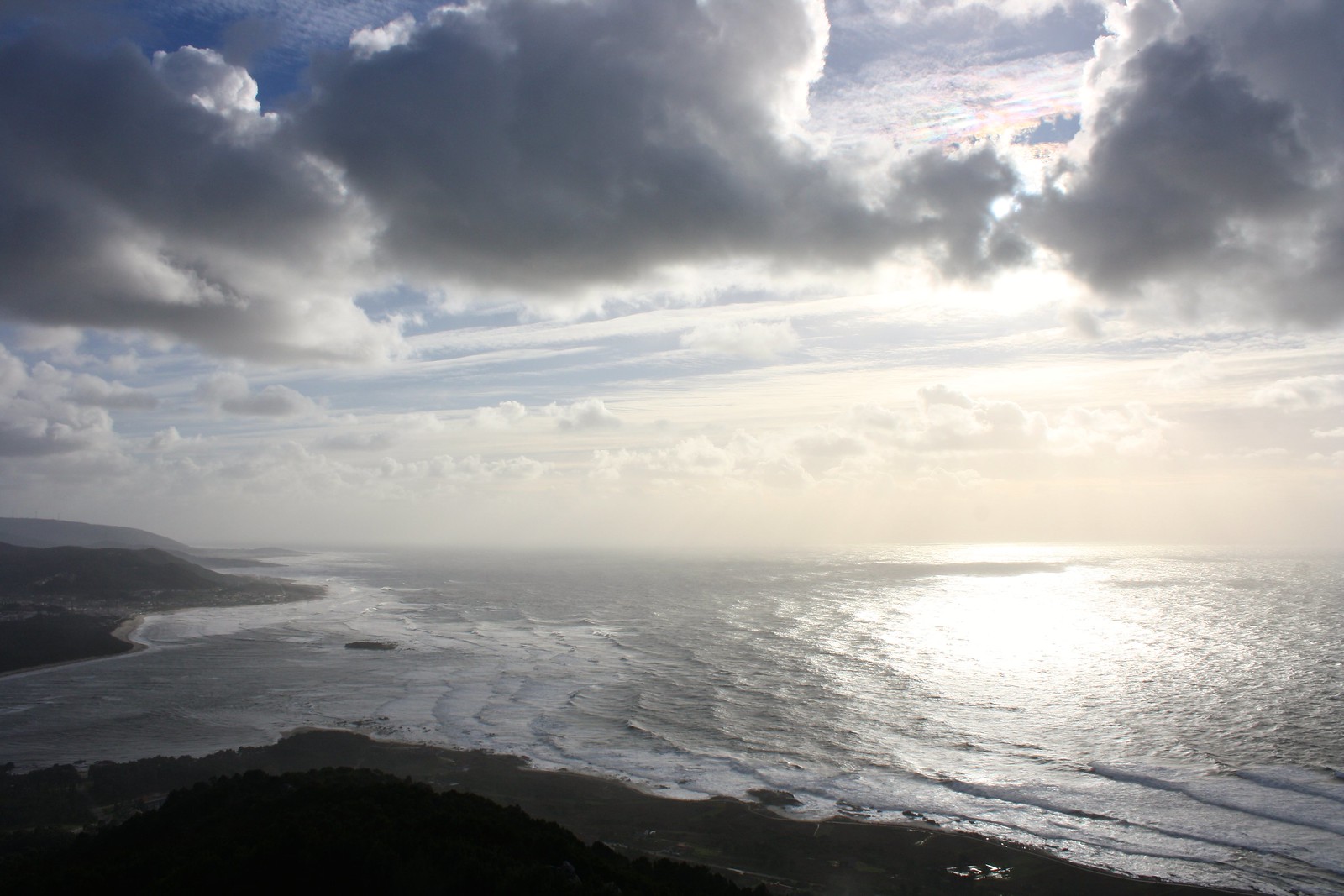If you chase the western coast of Galicia all the way south to the Portuguese border, you’ll end up at the mouth of the Miño River and the compact fishing village of
A Guarda, too. I took a daytrip to this remote corner of northwest Spain while exploring
Vigo back in January and really enjoyed this quiet—and historical—taste of coastal Galicia.
After a glorious seaside lunch of
croquetas and steamed mussels, I left the city center of A Guarda and began hiking up
Mt. Santa Trega. The footpath passed through eucalyptus and pine woods, and even a rainshower. But after a brief, 45-minute climb, I emerged at the summit, the site of some pre-Roman ruins. Called a
castro, these walled, Celtic-era settlements consisted of circular stone huts capped with thatched roofs, and they endured throughout the Roman period. The
castro de Santa Trega is one of the most famous in all Galicia, simply because the archaeological work done over the centuries revealed such a gigantic inhabited area. If you make the hike (or simply drive up), you get to stroll through ancient avenues and cross over long-abandoned thresholds, as well as imagine dinner cooking over primal fire or services being bartered for goods.
But these prehistoric ruins were only half the reason for huffing and puffing up the hill. From the mountaintop, you can see clear out all the way to Portugal (okay, it’s not that far) on the other side of the Miño River, and you can contemplate the endlessness of the Atlantic from a chilled, windswept location.
How to get there
From Vigo, take the
ATSA bus, or from Caminha (Portugal), hop a ride on the ferry.
What was your favorite photo from this post? Have you ever been to a castro ruin before? Comment in the thread below!






